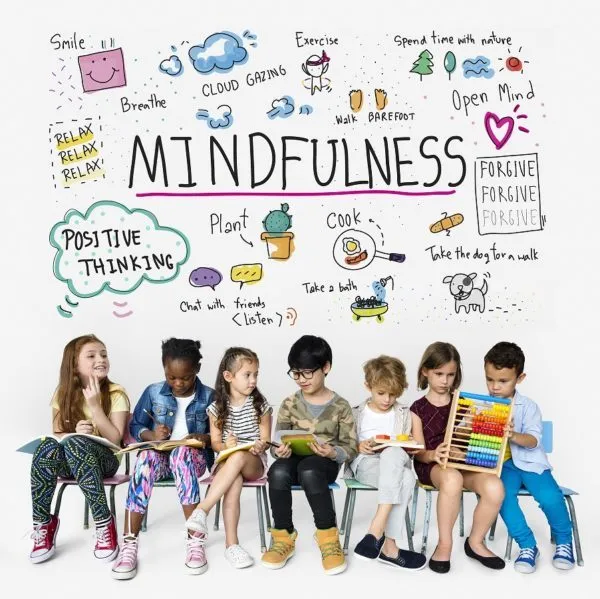t’s no secret that we’re facing a youth mental health crisis. Rates of anxiety, depression, and suicidal ideation in teenagers have skyrocketed over the past decade. Recent surveys found a staggering 60% of high schoolers reported persistent feelings of sadness or hopelessness.
With numbers like this, why isn’t there a bigger focus on mental health education in schools? And when we talk about mental health education, we’re not just talking about teaching students the signs and symptoms of depression. We’re talking about providing young people with the knowledge and resources to recognize their own emotions, cope with stress in healthy ways, foster meaningful relationships, and develop self-advocacy skills.
Mandatory classes addressing physical health have long been the norm. Students must take courses in biology, sex education, and physical fitness graduation requirements.
Yet the mind is left behind. If schools integrated mental health education into required coursework, they could transform the trajectory of our youth mental health pandemic. Subjects like emotional intelligence, anxiety management tools, recognizing disorders, and substance abuse risks should be prioritized as much as trigonometry or literature analysis.
And what better spot to begin the conversation than in education? Schools are an ideal social impact platform for normalizing conversations about mental health. They can provide teens with life-long skills to understand and care for their minds.
The time has come for policymakers to mandate comprehensive mental health education in schools at every grade level. Aligned with physical health counterparts, these classes offer tremendous promise for supporting our students before they reach the crisis point.
The Shocking State of Youth Mental Health
It’s easy to imagine mental health issues being an adult-only problem, but unfortunately, the statistics tell a different story.
Substance Use Disorder: Approximately 6.34% of youth in the U.S. reported a substance use disorder in the past year. This includes 2.85% with an alcohol use disorder and 4.85% with an illicit drug use disorder.
Increase in Sadness and Hopelessness: In the decade leading up to the pandemic, there was a 40% increase in feelings of persistent sadness and hopelessness among young people. This also includes an increase in suicidal thoughts and behaviors.
Suicide Rates: The rate of death by suicide among 10-24-year-olds increased by 2.8% from 2018-2021.
Impact of the COVID-19 Pandemic: More than a third (37%) of high school students reported poor mental health during the pandemic, and 44% reported persistent feelings of sadness or hopelessness in the past year.
The situation has intensified so severely in recent years that Surgeon General Dr. Vivek Murthy deemed the youth mental health crisis an official national emergency in 2021.
These alarming statistics indicate just how desperately today’s students need mental health support. By integrating topics like emotional skills, self-care, inclusivity, and distress tolerance into mandatory curriculum, schools can help students when they need it most.
Young minds depend on policymakers to act on reforms aimed at mental health education in schools – and we need to listen.
The Benefits of Mental Health Education in Schools
So why should schools invest more time and resources into mental health education?
Mental health education in schools can have many positive benefits, many extending far beyond the classroom. Beyond helping students cope with their feelings and find balance in their lives, mental health education can also help create a supportive atmosphere where everyone can thrive and feel safe.
Promoting Awareness and Reducing Stigma
The single most impactful benefit of mental health education in schools is undoubtedly stigma reduction. Currently, the widespread stigma surrounding mental illness presents the greatest barrier deterring students from seeking help.
This stigma stems from misconceptions framing mental illnesses as personal flaws or defects in character. Students struggling with anxiety or depression often feel deep shame. They buy into the idea that their distress reflects some sort of inadequacy or weakness. Due to this stigma, students hesitate to talk openly or pursue treatment for fear others will judge them.
Integrating mental health topics into mandatory curriculum provides knowledge combating damaging stereotypes. With education, students can better recognize conditions like obsessive-compulsive disorder and bipolar disorder as legitimate medical issues – just as worthy of compassionate care and concern as physical injuries or diseases.
Stigma thrives on misinformation and lack of awareness. Providing students with age-appropriate education grounded in compassion replaces ignorance with understanding. It helps foster an open, shame-free culture where students feel safe seeking treatment.
Equipping Youth with Essential Life Skills
Beyond academic knowledge, a mental health curriculum equips students with practical life skills that serve them indefinitely. Subjects like emotional intelligence, distress tolerance, help-seeking strategies, and media literacy empower youth to proactively manage their mental health.
With coping mechanisms like mindfulness, meditation, journaling, and progressive muscle relaxation in their toolkit, students can better endure life’s universal challenges. Learning healthy outlets for stress makes them less likely to turn to damaging escape routes like substance abuse. Equipped with psychological first aid tactics, teens can also support struggling friends while getting help.
Mastering emotional intelligence, healthy boundaries, good communication, and self-advocacy abilities further prepares students to handle interpersonal issues. These competencies make managing relationships, peer pressure, and conflict much easier. They are also extremely useful life skills that translate to workplaces and adult relationships.
Enabling Early Identification and Intervention
Through mental health education in schools, students can identify emerging issues rapidly in peers and themselves. Getting struggling students support services early is crucial, as quick intervention can radically improve outcomes.
Many mental illnesses like anxiety, mood disorders, and PTSD conditions intensify over time without treatment. However, when identified early, intensive therapies can help stabilize or resolve symptoms before they progress. Early intervention also minimizes the likelihood of comorbid conditions emerging concurrently.
Getting teens help quickly additionally reduces suicidal ideation risks prevalent in untreated mental illness. Warning signs like intense, prolonged sadness or social withdrawal are clearer to educated students better positioned to direct friends to treatment. Seeking help promptly also prevents mental health crises necessitating hospitalization or crisis services down the road.
Curriculum Development and Implementation
Successfully integrating mental health education into schools requires thoughtful curriculum design and staged implementation. While there are countless ways that schools can integrate mental health education, a holistic approach is recommended.
The first step should be to develop a comprehensive mental health curriculum built via a Personal Growth Platform emphasizing prevention, intervention, and promotion of positive mental health. And while every school should tailor its curriculum to fit the needs of its particular student population, some basic components are essential in any comprehensive program.
Key Topics to Cover
Understanding Mental Health and Wellbeing
- What is mental health?
- Destigmatization and compassion
- Healthy social-emotional development
- Self-care fundamentals
Recognizing Signs of Distress
- Common mental health issues and their symptoms
- Warning signs of crises in yourself and others
- Risk factors for self-harm and suicidal ideation
Healthy Coping Strategies
- Stress management skills
- Emotional regulation tactics
- Building support systems
Accessing Treatment and Support
- School and community resources
- Professional mental health services
- Care navigation and advocacy
Staged Implementation Across Grade Levels
Age-appropriate mental health education should begin in late elementary school with foundational topics like emotions, self-care, growth mindset, and getting help.
As students mature, the curriculum should cover more complex issues like clinical diagnoses, dual disorders, and suicide prevention. However, core concepts like destigmatization, compassion, and help-seeking behaviors should remain consistent across all grade levels.
Curriculum development must ensure instructional materials and content are both age-appropriate and culturally sensitive. All students should see themselves reflected in lessons framed with compassion. Resources should come from reputable sources and diverse perspectives, and technology, such as Positive Social Media Platforms, should be utilized to connect and engage students.
Addressing Challenges and Demonstrating Positive Outcomes
While the benefits of youth mental health education in schools are clear, a look at the current educational system shows just how challenging it can be to make such a massive shift. Without proper support and materials, educators can feel overwhelmed or ill-equipped to effectively address mental health in their classrooms.
Curriculum Overload Concerns
With schools already stretched thin meeting academic goals, some worry that added mental health coursework may overload teachers and students.
However, physical health classes are already mandatory without overburdening staff. Mental health lessons framed as equally essential reinforce student wellness priorities – and with proper implementation, they can be integrated into existing materials without starting from scratch.
The Risk of Biased Materials
As with any subject, mental health curriculum risks introducing biased, non-inclusive worldviews. Materials and instruction must come from reputable sources using trauma-informed language.
Resources should reflect diverse peoples, experiences, and cultural perspectives. Only when materials meet these standards can they be considered useful and appropriate.
By keeping these guidelines in mind, teachers and administrators can create an effective mental health curriculum that positively impacts the whole school community.
Potential Stakeholder Resistance
While public support for youth mental health intervention is high, some parents, boards and legislators resist schools addressing sensitive health topics.
However, data shows even controversial subjects like suicide awareness and sexuality education garner over 90% parent approval when properly implemented. With collaborative development and communication, most concerns about mental health topics can be addressed and stakeholders can become more supportive of interventions.
Demonstrating Positive Outcomes
Ultimately the immense mental health benefits empirically justify mandating this curriculum, despite challenges. By collecting data, tracking outcomes and presenting results, schools can prove the positive impact of mental health interventions.
Engaging Students and Families
For greater success, it’s important to engage families and empower students. Schools should consider promoting dialogue between faculty, parents, and students. Additionally, encouraging student input in curriculum development can create greater buy-in for implementation while increasing understanding among students.
Vulnerable groups, including LGBTQ+ and minority students, see risk reductions over twice as high from interventions. Mental health curriculum shows immense promise to radically improve youth well-being and life outcomes when applied compassionately. When added to a platform for social impact, these interventions can make a significant difference in the lives of students and families.
Let’s Make a Case for Mandated Mental Health Education
Given the severity of the youth mental health crisis, schools have an urgent duty to prioritize mental health education in schools. Integrating a mental health curriculum represents a monumental opportunity to equip teens with lifelong healthy coping skills.
Compassionate education grounded in facts and inclusive perspectives provides benefits no traditional academic subject can match. Beyond core skills like emotional intelligence and resilience, this knowledge has the power to drastically reduce stigma barriers. It also enables vulnerable students to access essential support services early when intervention matters most.
Simply put, prioritizing student mental health equals saving young lives. Our teens are begging for access to compassion and life-saving knowledge as they struggle with anguish. We owe it to students and families to make mental health literacy as fundamental as any academic lesson. The first step is mandating this urgently needed curriculum in every single school.
We invite you to join us at AlignUs to help push for this essential change. Together, we can go beyond the borders of traditional education and empower a generation of learners with the knowledge and resources they need to stay safe and thrive. Our social impact platform allows you to easily implement mental health education through comprehensive resources and access to an ever-growing community of educators, experts, and advocates.
At AlignUs, we believe that every student deserves to have their emotional well-being prioritized just as much as their academic success. Our mission is to break the stigma surrounding mental health and provide students with the tools they need to live healthy and happy lives.
Let’s make mental health literacy part of every student’s journey. Show your support for change today!




